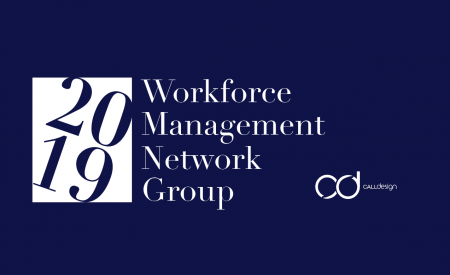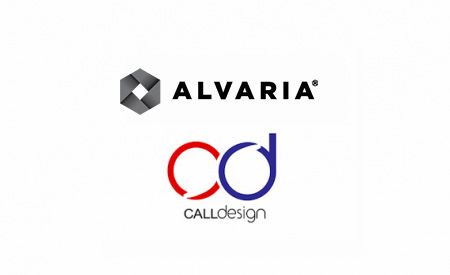Transitioning Back to the Contact Centre
With the threat of COVID-19 still lingering, everyone needs to understand exactly what it means to come back to the office. Contact centres are at an especially high-risk for transmission due to the number of people on each shift and the sharing of equipment between team members throughout the day. There need to be strict safety guidelines in place for businesses that are bringing their workforce back into the office. In this blog, we go into detail on what bringing your staff back to the contact centre should look like.
The Impact of Increased Handle Times

Written by Michel Niere
In our third instalment in the WFM and New Normal series, we talk about the impacts of increased handle times. As a lot of contact centres have quickly had to adopt work from home strategies to maintain BAU status, there have been some things to be wary of, and increased AHT is one of them. Some of the causes of increased AHT might be due to:
- Technical issues like the internet not being fast enough, therefore taking longer to load information and as a result increasing talk or hold times
- If a secondary team is involved and the agent can’t get a hold of anyone and has to place the customer on hold for extended periods
- New staff coming on board and taking longer to find and resolve the issue
(These incidents can, of course, occur even when staff aren’t working from home, and there is no pandemic).
Average Handle Time
Let’s focus on Average Handle Time. Average Handle time is the sum of talk time, time on hold, and wrap-up time divided by the total number of calls. Targets are often set for individuals to maximize performance, keep hold and wrap times low, or manage talk times but still provide excellent customer service. A business can implement a learning curve or glide path to help the employee meet personal goals and for the group to meet capacity targets. Any change to call flow or products and services offered can lead to a change in handle time duration.
How WFM Can Help
From a WFM perspective about forecasting, changes in AHT can be either permanent or temporary. With guidance from the business and an understanding of the external factors influencing the changes, a WFM practitioner would adjust their forecast as necessary. For example, if the causes of the change are permanent, this could lead to revisions in capacity plans or budget forecasts, quarterly forecasts and even intraday level forecasts. However, if the change is temporary, then perhaps a quick forecast for the next three days or week would suffice. As much as we want to be proactive in forecasting if you can’t change schedules in a short period, forecasting at short notice may not be beneficial.
If however, you believe it is the “new norm” then it is essential to make the changes to ensure more accurate forecasting and planning.
Effective Strategies for Managing a Contact Centre

Contact centres are the frontline of your customer service operation, which means that your contact centre must be operating at optimum capacity at all times. The management of your contact centre is an essential element to operating successfully and providing your customers with the very best customer service. The success of your contact centre relies on the strength of your agents and management teams. Without the right management, even the best contact centres will suffer. Below, we have 4 effective strategies for managing a contact centre.
Making Your Contact Centre Work Better
Contact centre changes are never an easy venture, but it's crucial to embrace an opportunity for change. While the world is slowly returning to normal after a global pandemic, now is the time to identify how your contact centre can be improved. For some organisations, there may be an influx of calls from customers asking about your services. Your team will need to be ready, so it's essential to streamline your operations to address the needs of your customers and provide the touchpoints that they are looking for in order for them to interact more effectively with you.
Providing a great customer experience
A multi-faceted and customisable customer support solution is vital during a crisis to provide a great customer experience. Customers often struggle to reach businesses at a time when they need them most. During the recent pandemic, some contact centres faced increasingly high volumes of calls, which caused longer hold times, reduced callback numbers and increased frustration for their customers. It’s important to learn from this and to make the necessary changes to provide better support in the future. With the right tools and processes in place, your contact centre will be able to field the calls that are coming in better and continue to provide a great customer experience regardless of whether your staff are working from home or in the office.
How automation helps
Automation includes Interactive Voice Response, Chat Bots, and self-help applications (web browser or smartphone app-based). However, all automation needs integration to source systems to make it truly useful in providing benefit to a customer. With an IVR, customers can access business functions you choose to make available to them in order to take calls away from agents, and only send those calls to an agent when a customer needs more assistance than they can get from the IVR. Careful crafting of your customised menus and transactions gives your customers a choice to make their own decisions. Additionally, when needed, it can route your customers to specialised agents that can be ready to answer their questions without hesitation, based on the interaction that the customer has had within the IVR.
Proactive outreach for positive touchpoints
Depending on your industry, this crisis might be an excellent opportunity for your agents to proactively reach out to your customers to ensure them that your team is still available and standing by to assist them with whatever they need. Whether this is through an outbound dialler, email campaign, social media, or even a widespread text message, it's essential to establish that your company is still in operation and that your customer's needs come first.
Identify all touchpoints
Touchpoints are all the places online that your customers can interact with your brand. These touchpoints could range anywhere from adding a product to their online shopping cart, engaging with a post on one of your social media channels, opening an email, or interacting with the customer service chatbot on your website. Once you identify these touchpoints, you'll get some immediate insight into what the customer experience is. Are there too many? Maybe your company website is too complicated, requiring too many steps to get to a purchase or a download. If, on the other hand, you find that there are fewer touchpoints than you realised, it's time to create some new touchpoints on your website. It's all about balance and making sure that the right pieces are in the right place.
Improve your Workforce Planning capabilities
Making sure you have the right staff, in the right place, with the right skills, at the right time is an essential part of optimising the customer experience. Unfortunately, it is something that is often not done well. Investing in the success of your workforce planning team is critical to achieving success. When looking at ways to improve your contact centre, review both your Workforce Planning software functionality and the team’s skills in both best practice WFM and using the tool.
How Call Design Can Help
Call Design is the ideal solutions partner for elevating the operations and processes of your contact centre. Our consulting and technology solutions empower your staff to improve the customer experience, giving your company the competitive edge you need. By improving your operations and giving your customers options, you are improving their experience with your brand. Contact Call Design today to learn how we can help you.
3 Ways to Drive Agent Engagement in a Contact Centre
If you know anything about contact centres, then you know that it can be hit or miss when it comes to how interested (or engaged) an agent is with their caller, or their job for that matter.
Just a little nudge in the right direction, and your contact centre could be humming, but if you are like many contact centres, that ‘nudge’ needs refining, and there’s a new way in which you can do it. What contact centre managers have realised is that their investment in training and development, along with employee satisfaction and engagement, is the best investment they could ever make.
According to an Aon Hewitt study, a mere 5% increase in employee engagement can drive an increase in revenue by 3% by the following year. On the back of this ‘new’ digital age brings to the forefront major advancements in technology particularly in artificial intelligence, robotics and of course, gamification (our personal favourite).
Employees that work in contact centres may at times feel not qualified enough to perform their required tasks to the best of their capabilities and hence feel slightly unmotivated and unambitious. Engagement among contact centre agents is important to ensure employee satisfaction is attained.
In come companies like Call Design’s partner Datagamz who aim to optimise and radically improve the engagement and capability of contact centres by improving communication inside and outside the organisation. They focus on gamification as well as analytics to provide insights, and throw a few games into the mix – which ultimately get’s everyone a little excited (and productive).
Here are 3 of the best ways gamification is used to drive agent engagement in contact centres.
- Gamification
The concept of incorporating games into work has proved successful when the game is designed to improve productivity. Gamification taps into employees’ psychological needs for challenges, rewards, feedback and fun. Through Datagamz technology, the focus is on earning points, levelling up in games, having leaderboards and game targets that encourage employees to do better and ultimately be more competitive. It prides itself as a stakeholder in the incorporation of bringing fun into work – where an employee finishes a work-task and simultaneously levels up in a game. Constructive feedback will also be shared in the game, which is beneficial to all employees. - Manage Employees using Game Console
Frankly, nobody likes being micro-managed. With Datagamz’s solution, employers are able to keep track of areas they want to target to determine employees’ individual performance. Employees have the choice to either compete against or team up with their colleagues while completing tasks. Having a point system and rewarding employees for compliance encourages repeated positive behaviours. - Recognition and Rewards
Last but certainly not least is recognising and rewarding employees’ performance. Announcing and displaying top scorers is one way to increase engagement and encourage others to follow in this direction or use Datagamz to reward high achieving employees with the freedom to play music of their choice upon accomplishing a milestone. Employees with exceptional knowledge and skills can easily be identified to help benchmark where everyone is at.Utilising Gamification technology provides insights on employees’ motivations and engagement patterns. Recognising their strengths and rewarding their good behaviour will urge employees to keep up the hard work, hence increasing satisfaction as well as engagement overall. What more could you ask for?
https://datagamz.com/gamification/
https://insights.humancapital.aon.com/
Play Your Way to a Higher Performing Contact Centre
The biggest threat to the productivity of a contact centre is a disengaged employee. If your team is disengaged with their work, the performance of your contact centre will suffer dramatically. But what if you were able to make a game out of your employee’s performance? Making a game out of the mundane tasks that come with a contact centre will not only increase the likelihood that these tasks will be finished, but it will also improve the quality of the work done on the task. If this approach can strengthen the integrity of the work for the smaller tasks, just think of what it can do for some of the bigger, more complex tasks that your agents face every day. Gamification is the answer to your employee engagement problems.
How gamification can help
Gamification is the implementation and application of gaming elements to encourage engagement with a product or service. We can utilize gamification to improve employee engagement to increase the performance of your contact centre. These games are able to translate behaviours that improve productivity into badges, quests and challenges for all the players involved. Whether you are training your employees on a new product or trying to encourage the completion of mundane tasks, gamification will change the way your team works.
Driving performance with friendly competition
The success of your team may very hinge on the environment of their workplace. Automation is taking up more and more of the routine tasks of a contact centre, so your agents are tasked with the bigger, more complex customer questions. Gamification can help facilitate an environment that engages your employees in competition to increase their productivity and on-the-job knowledge. Whether they are competing for the top spots on a leader board or levelling up in training activities, gamification can make your team members better employees through challenges that reward and empower them on a personal level.
Celebrate your success together
With gamification software, you have the opportunity to reward the employees who are doing well and celebrate their success publicly. You can utilize the screens in your contact centre to live stream player progress, leader boards and achievements for everyone to see. Public displays of success are a great way to motivate disengaged or newer employees to join in on the fun, while also celebrating the good work of your engaged employees. When you can celebrate the success of the whole team at once, everyone wins!
If you are interested in implementing gamification solutions in your contact centre, get in touch with someone from our team today.
Call Design Invite you to the 2019 Workforce Management Group
We are thrilled to announce that we are hosting five workforce management network groups this September in Sydney, Melbourne and Brisbane, Auckland and Wellington.
Learn about what new technology and developments are coming your way to help you solve contact centre challenges using the latest in automation and more. Network and share ideas with your industry peers. There is a lot to be discussed...come along!
To find out more, check out our events on Eventbrite below:
Alvaria Channel Partner, Call Design, Named Premier Australian Partner
This change makes Call Design the sole partner in Australia supporting Alvaria Software customers in the market.
International workforce optimisation solutions company, Call Design, has achieved premier partner status with technology giant, Alvaria Software’s workforce management solutions in the Australian market following a company-wide restructure.
For the past 20 years, Call Design has been responsible for sales and implementation of Alvaria Software technology in Australia, United States, Europe and Asia. This business transformational deal will allow Call Design the opportunity to serve the Australian market with unparalleled support from Alvaria's vast corporate resources and technology suite.
Alvaria Software has undergone significant restructures to change the business in Australia, moving from a combination of direct selling and local channel partnerships, to a program focused more extensively on channel partners while also leveraging experts in the local market.
“We are thrilled to have worked with Alvaria Software for two decades. This change will be a quantum leap for Call Design and is kudos to the global team we have responsible for implementation of Alvaria Software technology into large corporations,” said Brett Redman, Director, Call Design.
“The magnitude of this change will allow for Call Design to continue its aggressive growth in the region and continually support Alvaria Software in selling its best-of-breed solutions to contact centres across omnichannel interaction management and world-class workforce optimisation solutions.”
“As we move into gamification, AI and automation as part of our suite of solutions, we are confident that Call Design will continue to combine the best technology and consulting to clients in the region, and Alvaria Software is very much part of that.”
Call Design clients include some of Australia’s most iconic brands including Westpac, CBA, NAB, Bupa, Qantas, Alliance Insurance, Energy Australia, as well as global names such as Transcom, Cox Communications, Macy’s and more.
Alvaria offers best-of-breed capabilities extending across both contact centre and workforce optimisation applications. Contact Centre suite software supports both automated and live inbound and outbound communications across voice, SMS, email, chat and mobile interactions. The Workforce Optimisation suite focuses on both workforce productivity and employee engagement strategies, with best-of-breed workforce, performance and quality management solutions. Workforce and Interaction Analytics are available across these capabilities, putting the information you need to make decisions at your fingertips.
“This directional change will give Alvaria Software a greater focus in supporting channel partners such as Call Design and provide an emphasis on new technology developments in employee engagement, AI and automation—which will ultimately transform workforces in the future,” confirmed Redman.
“We are enthusiastic with this move, as it reinforces Call Design’s commitment to the Australian market, and our ability to use our extensive experience to continue to support Alvaria Software.”
For more information:
Contact media advisor Mellissah Smith 0396 927 600 / 0412 994 994 or alternatively email msmith@marketingeye.com
About Call Design
Call Design is a well-recognised expert in workforce optimisation solutions for contact centres in Australia, United States, Europe and Asia. Offering both on-site and in-the-cloud solutions, Call Design has a robust offering of innovative solutions that optimise the workforce. Combining best-in-class technologies with an experienced team of consultants to offer businesses personalised workforce optimisation solutions, Call Design empowers your employees, engages customers, and automates everyday work process with seamless implementation aimed at enhancing efficiencies at every level of an organisation.
About Alvaria
Alvaria is on a mission to simplify and improve customer engagement. Alvaria’s enterprise software is used by millions of agents every year and supports billions of consumer interactions around the world. Their best-of-breed contact centre and workforce optimisation applications help companies keep agents engaged while providing exceptional customer service experiences. Their flexible, highly scalable solutions for self-service and live interaction management and workforce optimisation are available on-premises or in any hosted, private or public cloud environment.
Increasing Agent Satisfaction with Better WFM Tools
Alvaria Software’s most recent Contact Centre agent survey listed agents’ top factors that drive their sense of engagement: Work/life balance came in 3rd, two spots above competitive wage with flexible work schedule not far behind.
A skilled scheduling team can do great work with spreadsheets, but when you add a best-fit Workforce Management tool, you open up new possibilities for truly transformational improvements in agent satisfaction. Adding more flexibility to the scheduling process can help agents find that work/life balance they want, but contact centers still need to maintain the right staffing levels to achieve their service goals. The right WFM tool can help you find the right balance.
More options in the scheduling process - Agents can feel more engaged when they feel more control over and connection with their work lives. You’ve forecasted the staffing levels to meet your service goals, and you can control the methods you use to fill those staffing levels. The right tools can add new options that might not have been feasible in the past.
- Preference-Based Scheduling – Allowing agents some input into the scheduling process can be a very effective way to make agents feel more involved and invested. You can reward experienced senior employees with schedules build on their preferences for days worked and start times, or add another layer by adding performance scores to the mix as an incentive for above-average work. You can take a subset of agent and create preference-based schedules as a base, then building rules-based schedules on top to make sure all your requirements are covered.
- Dynamic Scheduling – For flex agents or work-at-home agents, could you increase your options for schedule flexibility? If your work-at-home agents would like to work some hours in the morning, some in the afternoon or some in the evening, it could be a win-win for them and you. Giving them a schedule that better fits their lives while allowing you to have them working at the busiest times of your day without having to keep them on the clock at slower times when they aren’t needed. With manual scheduling, the logistics are daunting; but the right WFM tool can help you break down your staffing requirements into configurable blocks and then present the available blocks to agents so they can effectively build their own schedules.
- Shift Bids – Many contact centers use shift bidding to fill schedules and give agents a method to move from less-favored schedules to ones they like better when those schedules become available. But creating and executing a shift bid can be extremely time-consuming when done manually, limiting the frequency you can offer new bids, which limits the chances your agents have to move to a schedule they like. Having a WFM tool that helps automate this process means that you can offer shift bids more often, not only assisting agents to feel more involved, but also giving you the chance to use fresher schedules that are a more optimal fit for your current business requirements.
More options for intra-day changes – Agents want flexibility when it comes to meeting their need for planned time off as well as accommodating things that come up at the last minute.
- Automated Vacation – Rather than going through a cumbersome process of contacting a manager to find out if vacation time is available, sending emails to the scheduling team, then waiting for those extremely busy people to have a chance to respond, an agent using an automated WFM request process can see available vacation hours and use self-service tools to enter vacation requests that are processed in a fraction of the time. Agents feel more control over their vacation strategy, team supervisors don’t need to stop what they’re doing to deal with vacation requests, and the scheduling team knows that staffing levels are protected against any accidental overpromising of vacation or feelings that favoritism is used in the process.
- Ease of VTO and VOT – Some agents look for any opportunity for overtime, and others might need to leave early to deal with family emergencies; either way, it’s another opportunity to satisfy your requirements and satisfy agents at the same time. When you’re busier than expected and need additional agents, the right WFM tool can help you identify the agents who want overtime, while still tracking who is working OT and setting any limits to avoid giving too much OT to the same people. Similarly, you can make voluntary time off available to agents who need it, alleviating unexpected overstaffing by allowing those agents to request VTO though an automated process that gets them off the clock sooner and saving the contact center unnecessary staffing costs.
- Automated Trades – Opening the shift swap process to larger groups of agents, even agents at different sites means more opportunities for trades for your agents; but it also brings more complexity. An automated tool can keep tight control over the trade process, allowing agents to have more possible trade partners while automatically checking skill compatibility, staffing levels, protecting against overtime, controlling the number of times agents are trading, and other configurable rules that you would otherwise have to check manually. As with automated vacation request, agents get a response faster, and all users can be alerted so they can keep an eye on the trade process.
Mobile Access
Many agents would love 24/7 mobile access to their schedules, vacation requests, and trades; the newest generation of agents may even expect that they will be able to interact with their work schedules anytime from their phones. A Mobile WFM app can add another level of agent satisfaction to your scheduling process by making all of your schedule optimization efforts accessible even when agents aren’t online at work. This can be extremely helpful in streamlining and automating your callout process when agents can’t make it to work, as well as allowing you to communicate things like overtime availability to agents who might be willing to start work early if you need them. Shift bidding can be facilitated if you give agents the ability to meet their bid window even if they aren’t at work.
Added options for schedule flexibility is just one way that a best-fit Workforce Management tool can make a real difference to your agents’ satisfaction with their jobs, helping you keep your top performers and attract new talent. Contact us or email the Call Design team today to find out how we can help make it happen for you!
Why and how to adopt a culture of knowledge sharing
What are your business's key resources? We’re willing to bet that your most precious one is in-house knowledge.
It’s simple really, all your employees need to be experts in their fields, be that engineering, sales or accounting, plus they need to know everything about your business and its products or services. The success of your company literally depends on keeping this knowledge in-house.
One way to facilitate this is to look into your knowledge sharing strategies. So what exactly is knowledge sharing, why do you need it and how can it be implemented?
What is knowledge sharing in a business?
Knowledge sharing can be defined as a designed process where employees exchange both their implicit and explicit knowledge in order to create mutual understanding, resulting in new understanding. This can sound a bit complicated but basically it’s any process that allows employees to share their expertise efficiently with each other in order to generate new ideas and retain important skill sets within a company.
True knowledge sharing consists of:
- Knowledge donation – i.e. communicating an individual’s intellectual capital to others.
- Knowledge collection – i.e receiving and computing another person’s intellectual capital.
Knowledge sharing is important for organisations. Knowledge sharing requires both donation and collection of information.
Businesses with an effective knowledge sharing structure often support these processes with carefully selected technology. This means that information can be accurately stored and distributed digitally to other employees in the case of someone leaving the company. It can also make processes like training and onboarding more time efficient, as employees can work through information at their own speed rather than attending classes.
Why should you adopt knowledge sharing?
As the old adage goes, knowledge is power. Without exception, groups are better at achieving goals when everyone involved has all the skills and knowledge required to do so. This means giving them key information about the process, teaching them the required skill set, and communicating effectively within the group so that everyone can perform a useful function.
Here are some further reasons why knowledge sharing is important:
Eases growing pains: Growing a company is always a difficult process, particularly when it comes to deciding who needs to know what. Who will train new staff and what are the clear chains of command? Having a clear knowledge sharing process can help to alleviate these problems at the source. Creating solid infrastructure that guides the onboarding process and ensures that everyone is getting the right information when they need it most.
Prevents knowledge hoarding: Knowledge hoarding is damaging for businesses. It means that when employees leave your company they take all of their expertise with them, leaving their team flailing. This is particularly important for organizations where specific client knowledge is essential for the working relationship. Knowledge sharing means that this expertise can be retained and built upon rather than dependant on certain individuals.
Retains your top talent: Providing people with all the information they need to succeed lets your best and brightest shine and prevents dissatisfaction from chronic communication problems. After all, no one likes being left in the dark, particularly when it makes their jobs ten times harder.
3 ways to create a knowledge sharing culture
Knowledge sharing can be a tricky culture to implement, largely because so much depends on how your specific company currently works. However there are some necessary basics that you can put in place.
1. Consider all the ways that knowledge is shared and encourage these activities
Ideas are exchanged in all sorts of ways depending on the situation and the characters involved. All the varied forms of knowledge sharing should be encouraged to ensure that you are getting the most from everybody. For example:
Face to face meetings and collaboration: Sometimes the best way to get to the core of a situation is to get some one-on-one time and bounce ideas around. It’s also a fantastic way to get the more shy older members of your team to contribute valuable insights. Setting regular time aside to communicate in this setup is often an important grounding for your knowledge sharing plan.
Offsite events or meetings: From company social outings to training events and conferences, changing up the scene is a great way to set collaboration in motion.
Presentations: Presenting ideas to a certain team or even the company at large means that everyone can keep up to date with developments and also take the opportunity to learn about things outside their roles.
Team sharing times: Whether its an hour every week to go through client updates or a quarterly break down, scheduling a regular opportunity to update everyone on progress keeps the team in the loop.
Outings are a good way to share knowledge. Knowledge can be communicated in a variety of settings.
2. Redesign your office to include more sharing space
Don’t underestimate the impact the physical space has on collaboration. There is nothing like planning a meeting only to find there are no rooms available. Building an office environment that encourages and enables easy collaboration makes knowledge sharing much more possible.
There are two effective ways to do this. One is to provide enough meeting rooms so that those who prefer private and quiet communication have space to carry this out. Secondly setting up common spaces so that employees can sit and work together. This allows casual get togethers and collaborative work to take place with ease.
3. Consider a knowledge sharing platform
A lot of knowledge sharing can be supported by new technology and associated platforms. This takes away many of the manual processes involved with storing information and giving staff access to relevant files and folders. Researching and finding a knowledge sharing software solution could help your company to more efficiently manage information and remove the heavy lifting aspects of processes.
If you’re interested in finding out more about knowledge sharing and streamlining your workforce solutions, get in contact with the experts at Call Design today.













